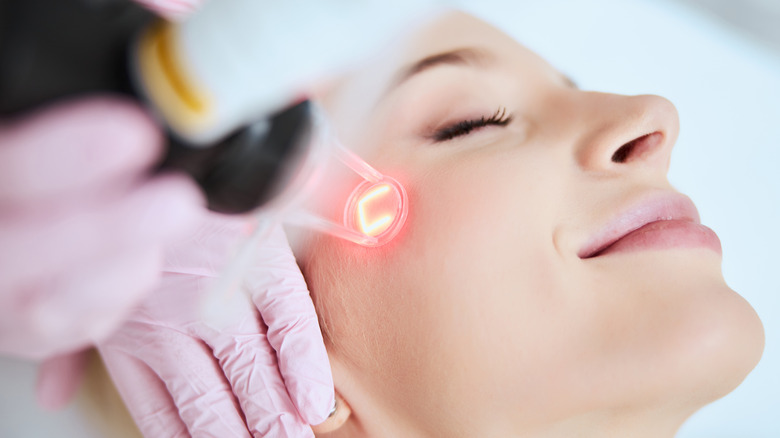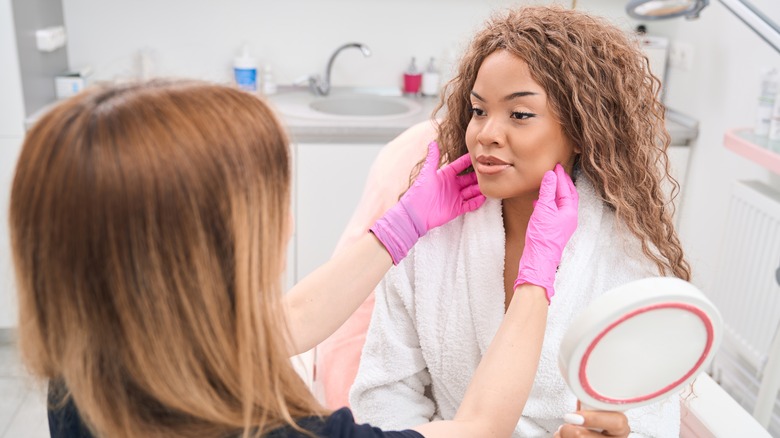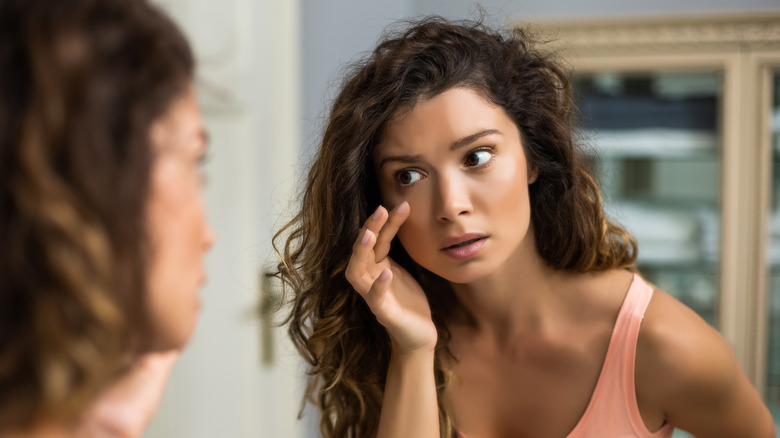Pixel Skin Resurfacing Induces Collagen Production To Help You Keep A Youthful Glow
Welcome to adulthood, where there's no shortage of fine lines, wrinkles, and crow's feet. Of course, a lot of good comes with being an adult, such as ice cream for dinner and not having to clean your room. But, combatting signs of aging, both physical and mental, isn't one of the perks. The process is tricky and can be frustrating for those trying to hold onto their youthful appearance. With hundreds of products floating around the market, it's easy to drop big bucks in an attempt to discover what works for you and your lifestyle.
The truth is, not everyone jumps at being needled with botox after hearing horror stories about a friend of a friend. However, others run to it because of its dramatic and quick results compared to a nightly OTC cream. Now, a new service is joining the ranks of botox, microneedling, and chemical peels. Pixel skin resurfacing is currently trending in the beauty world, but, is it worth the hype?
What is Pixel skin resurfacing?
Pixel skin resurfacing is an age-fighting treatment that launched in the U.S. in 2006 (via Consulting Room). Pixel is the trademark name for the laser tool that works by making microscopic holes in the skin's surface. Although making holes in your skin sounds like the exact opposite of what you want, this method actually encourages collagen production, which leads to smoother, firmer, and younger-looking skin.
It's crazy to examine how much collagen you really lose each year. As the body ages, it begins to produce less and less collagen, dropping about 1% every year according to a study published by Dermato Endocrinology. This drop in collagen is the number one cause of skin aging. Other lifestyle choices including smoking and excessive UV exposure also can harm your body's collagen production.
Pixel not only targets the biggest threat to youthful skin, but it's also a non-invasive treatment that provides immediate results. As RealSelf explains, a numbing cream is applied to the skin's surface so there is no pain. "People often say it feels like having a rubber band snapped against the skin," they note. Sure, you may be a little red for a couple of hours after the procedure, but in the following days, you will begin to notice your skin's texture positively changing. Be sure to remember, you may need a few sessions to achieve your desired result. It's also important to note that Pixel skin resurfacing isn't designed to fix saggy skin or wrinkles.
Is Pixel skin resurfacing right for you?
Pixel skin resurfacing treatments are totally individualized. During your session, the service provider will focus on common skin issues such as acne scars, rough and uneven texture, or fine lines that need a boost of collagen. If you're looking for a solution to any of these issues, Pixel might be worth a try.
However, people with very dark skin should steer clear of Pixel, as there is a risk of hyperpigmentation. People who have had radiation to the face, have an autoimmune disease, have a weak immune system, are pregnant or breastfeeding, or are prone to cold sores should also seek a different treatment for signs of aging. Side effects for any patient may include swelling, itching, pain, infections, and scarring.
Whether you decide to give in to the Pixel skin resurfacing trend or sticking to a diet of eating the best anti-aging food your skin needs, always do your research before attempting to combat those pesky wrinkles. Some methods can do more harm than good and it's more important to be healthy than wrinkle-free.


